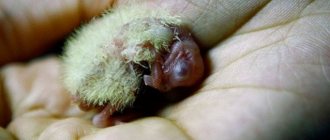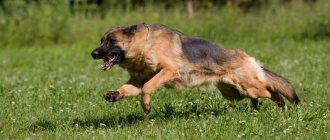Features of a street animal
A stray dog differs from a domestic dog in having more developed instincts, due to the habit of living in constant fear and distrust of people. Once in a new family, he will be extremely careful at first. If the behavior of the owner or other pets is not to their liking, then aggression may even occur. To establish contact, the owner must take into account the pet’s character.
Love and care will help you tame a street dog
A street animal has the following qualities:
- alertness;
- aggressiveness;
- timidity.
Most often, these qualities are expressed in dogs that have encountered human aggression. For example, a dingo dog does not tolerate the use of force.
In the enclosure, animals whose home used to be the street try to show their leadership. In addition, a stray dog more often suffers from the presence of parasites, for example, fleas, as well as digestive system disorders.
Important! Before you take your pet home, you must show it to a veterinarian.
The process of dog adaptation to a new owner can last about a month
How to attract an animal's attention and approach it
How often to worm a dog and puppy correctly
If you need to attract the attention of an animal, you should act carefully, following the safety rules:
- You need to beware of aggressive dogs. You should also avoid dogs that show symptoms of rabies.
- You should not look into the eyes of an unfamiliar dog. For them, direct gaze means a challenge, so it is better to look a little to the side.
- You can draw the animal's attention to yourself by snapping your fingers or clicking your tongue. You can try to call the animal, but in a calm tone, so as not to scare it or cause aggression.
- You should approach a dog whose attention has already been attracted slowly, avoiding sudden movements. You cannot squat in front of him, it is better to stay at a distance of 3-4 meters.
- Having approached the permitted distance, you should wait for the stray dog to come towards you. If he wags his tail welcomingly, then it is permissible to extend your hand in his direction, but you need to hold it with your palm down. It's best to have something tasty in your hand to help establish contact.
Main rules
Puppies are not wind-up toys that follow commands on demand. They are like children: they also need clear explanations and repeated repetitions, do not accept cruelty and often make mistakes. Before bringing your pet into your home, make sure you:
- Have enough patience;
- Unlimited time for full communication with the puppy;
- Ready to persevere and not give up;
- You will be affectionate, caring and surround him with your love, even if he does not immediately understand what you want from him.
Taming a puppy should take place without a whip. Unlike children, dogs often do not understand why they are beaten or why they are shouted at. The assimilation of material that is new to them occurs through repeated repetitions, bringing commands to the level of a reflex, and not through the awareness of the need to obey or behave well (“good” only by human standards).
How to train an adult dog to a new owner
It is much easier to tame an adult dog, inherited from previous owners who told about its habits and preferences. It is more difficult to domesticate a dog that is accustomed to the street, so in this case the question of how to attach a dog to yourself is the most difficult.
How many times a day should you feed an adult dog and a puppy?
To tame an adult pet, you need to show him attention and sensitivity. It is necessary to let him know about your positive intentions, because, for example, a shepherd dog is wary of a new family.
Important! Taming a yard animal will take more time than one that previously lived in the family. A wild dog a priori does not trust people, since he has already felt all their anger.
You can tame it with treats. However, you should be careful with food, because mongrels are accustomed to living from hand to mouth and are gradually accustomed to normal food, avoiding overfeeding.
The owner must learn to inspire trust in the dog
Dogs of discord
There is literally not a single point in the history of dog domestication that does not cause heated debate among scientists. A recent study on how dogs literally regulate the level of the “love hormone” in the body with their gaze, and with it human behavior, brings to mind the theory according to which it is still unknown who domesticated whom - we are dogs or they are us.
Some researchers attribute the domestication of animals to the Paleolithic (Old Stone Age), others to the later Neolithic, when people already led a sedentary lifestyle and took up agriculture. In other words, farmers could have dogs to eat them, and hunters - to help them pursue their prey.
At first glance, in the problem of dog domestication we see a classic case of scientists satisfying their own curiosity at public expense. Does it matter how exactly the gray wolf became a pet? Alas, everything is not so simple. The dog is the first domesticated animal, and many experts believe that without it all other domestic animals (cows, horses, chickens) might not have appeared at all. Therefore, to understand how and when the first domestication occurred is to understand how the foundations of the modern way of life - fueled by the very domestications that began with dogs - were formed.
Since 1907, the leading theory of domestication has been the simplest: once a man took orphaned wolf cubs, went out, and they became his faithful friends. Despite the romance of this story, it is very difficult to believe in it.
Let's start with the basics: yes, geneticists confidently breed a dog from a gray wolf (Canis lupus). Moreover, it is recognized as its subspecies (Canis lupus familiaris). However, representatives of the species Canis lupus are incredibly cautious and sensitive animals, literally hearing the leaves falling in the autumn air. It is very difficult to see the same wolf against his will: modern hunters use dogs or hunting birds to simply catch him. Of course, before the first domestication, our ancestors did not have such helpers. Finding even an adult wolf without them is a very dubious idea. To understand exactly how much, it is enough to remember that until the 21st century, people did not know about the presence of the gray wolf in Africa, and even its famous representatives, mistakenly classified as “Egyptian jackals,” were estimated as an endangered species numbering dozens of individuals. Only a genetic analysis of their excrement by 2011 established that these “jackals” are the same subspecies of gray as domestic dogs, and their number today exceeds one hundred thousand individuals. They began to look for the missing hordes of these animals - and literally in recent years they were discovered not only in Egypt, but also in a vast area from Senegal and Mali to Ethiopia. It is doubtful that the few primitive hunters were much more successful than modern scientists in detecting wolves, and especially wolf cubs.
Two wolf cubs play in the mountains of Switzerland
Photo: Denis Balibouse / Reuters
Let's leave the question of how the wolf cubs were found. There is an even more difficult question - how did ancient man manage to grow them in the first place? Many of us have seen modern wolves that were raised by people from puppyhood. It is widely known that they must be accustomed to humans from two weeks and in no case later than three, and only when isolated from adult relatives. After this, there is practically no hope that the wolf cub will perceive people as his own. However, until three weeks old, wolf cubs do not eat solids at all, requiring milk. It is unknown where the first cynologists who did not have dairy farming obtained milk.
And even if they had it, they would not be able to close the issue of raising young ones. Compared to other mammals, wolf milk contains a lot of arginine, without which Canis lupus cannot grow healthy. Modern wolf milk substitutes have very little arginine, which is compensated for by artificial additives, but where such additives could be bought many thousands of years ago is an open question, to put it mildly.
And the last reason to doubt: the grown-up wolf cub will remain loyal only to members of the human family where he grew up. The wolf, raised among people (and therefore not afraid of them), considers the rest of the representatives of our species as legitimate prey, especially when it comes to children and the sick. This is precisely how the unsuccessfully domesticated wolf cub from Gisinj in the 19th century killed a dozen children in three months, and this is why a number of modern wolf domestication centers have a sign “do not enter with a cold” on the doors. A wolf can attack even a person who is confident in his health - after all, many canines have such a good sense of smell that they can identify cancer by the smell of urine, about which the person himself may not yet be aware.
Wolf
Photo: Vasily Fedosenko / Reuters
The whole complex of problems of the “first step” in domestication led most researchers to the idea that it was not done by humans. The wolves themselves, who lived close to the Paleolithic hunters, gradually got used to not attacking the hens that laid the golden eggs. By following wandering human groups and eating the remains of the animals they killed, they could become specialized companions of primitive people. This scheme successfully solves the issue of feeding wolf cubs and wolf aggression towards the weak: focusing on older relatives, wolf cubs avoided attacks on primate cubs, perceiving them as a unique part of the pack.
Not so long ago, the specific mechanisms by which dogs “tamed” people became clear. Japanese researchers led by Miho Nagasawa found that dogs, by looking into people's eyes and spending more time with them, significantly increase the level of oxytocin in a person's blood, simultaneously increasing its level in themselves. Oxytocin, sometimes simplistically referred to as the “love hormone,” is commonly used by members of the same species to deepen bonds between individuals. In the case of humans, mother and child, looking at each other, also synchronously increase the level of this hormone, and the more time they spend together, the stronger their bond. However, before this work, it was unknown that representatives of some other species are able to evoke an oxytocin response in humans.
One of Nagasawa's students and a Labrador retriever
Photo: Mikako Mikura
Obviously, it is this ability of dogs that makes it easier for them to integrate into human society. This behavior of dogs looking into their owner's eyes on their own initiative is to some extent human manipulation, and, according to Nagasawa's group, is not characteristic of wolf cubs raised among people. By the way, the latter themselves do not experience an increase in oxytocin when a person looks at them. They often interpret eye-to-eye gaze like wild wolves, for whom this is a sign of aggression, in response to which the animal, as a rule, looks away.
Let's say wolves domesticated themselves, but when exactly did they decide to do this? A group of geneticists led by Peter Savolainen, having examined the DNA of modern dogs, confidently breeds them from southern Chinese wolves that lived no later than 16,400 years ago. This region still has the widest genetic diversity in dogs. According to this scheme, dingoes are considered the oldest domestic dogs, followed by African Basenjis and Arctic husky dogs.
Supporters of this version, citing dating, see domestication as one of the stages in the transition from hunting to agriculture and consider the first domestic dogs to be a meat breed of livestock. True, feeding a domesticated wolf, unlike a dog, requires 1-2.5 kilograms of fresh meat per day - that is, even a one-year-old wolf gives less meat than it takes to feed it.
At the same time, a group of archaeologists and geneticists led by Robert Wayne consider the wolf to be “European.” Animal skulls from the Robber Cave in Altai are confidently dated to the 31st millennium BC, and finds in Goya (Belgium) to the 34th. The search for kinship not by nuclear, but by mitochondrial DNA, transmitted through the maternal line, led Wayne's group to the conclusion that the genes of modern dogs contain traces of similar creatures that lived more than 30 thousand years ago, whose closest wild relatives are European wolves.
Skull of a Paleolithic “dog” from Goye Cave (Belgium)
Credit: Image courtesy of Royal Belgian Institute of Natural Sciences
1/2
Another purpose of the dog naturally follows from the earlier dating: domesticated by Paleolithic hunters, it was hardly considered by them as a supply of meat. Rather, ancient people were interested in the extraordinary sense of smell of former wolves or the guarding and transportation by dogs of many tons of harvested mammoth meat, without draft animals, unsustainable for small human groups.
Of course, supporters of the point of view of the late (Neolithic) domestication of dogs look for shortcomings in the conclusions of ideological opponents. And they find it - a February publication by Abby Drake's group claims that the find from the Belgian Goye Cave is closer in skull structure to a wolf than to a dog. On the basis of which it is argued that domestication occurred only in the Neolithic - at the same time as the domestication of other domestic animals.
Unfortunately, Drake's work ignores a study by Russian scientists published in 2011 that clearly points to the existence of a canine skull that is 33-34 thousand years old. Moreover, as the lead author of that work, Yaroslav Kuzmin, noted, the skull from the Altai Robber Cave is extremely similar to the remains of a dog from Greenland that lived only a thousand years ago. This means that already 33 thousand years ago, the domestication of canines had advanced extremely far - almost to the modern level!
The question of the time of domestication was finally clarified after the publication of a work in 2013, the first author of which was listed as geneticist Anna Druzhkova from the Institute of Molecular and Cellular Biology of the Siberian Branch of the Russian Academy of Sciences. Analysis of 413 nucleotides of the Paleolithic Altai dog showed that it is significantly closer to dogs and prehistoric canines of the New World than to modern wolves. Accordingly, the animal from the Robber Cave, 33 thousand years old, is the oldest dog known today, which means that the domestication of our smaller brothers occurred long before the advent of agriculture. The same Yaroslav Kuzmin believes that it is not even clear yet who the owners of the first Altai dog were: “both Cro-Magnons and Neanderthals are suitable in age.” In other words, the first domestication, in principle, may turn out to be pre-human.
Photo: The Upper Galilee Museum of Prehistory
Human and dog skeletons discovered in the ruins of a 12,000-year-old house in Galilee
Here, dog lovers can breathe a sigh of relief: almost all researchers believe that the domestication of dogs in the Paleolithic could not have been aimed at slaughtering them for meat. Man at that time was so well supplied with big game meat that he now disdained delicious venison, feeding it to his pets.
The assumptions of Russian scientists about domesticated dogs among Neanderthals seriously diverge from the concept of the popular book “Invaders” by American anthropologist Pat Shipman, published in 2015. According to Shipman, it was the domestication of the dog, which drove mammoths to human hunters and then guarded the obtained meat, that allowed man to displace the Neanderthals, occupying the top of the food pyramid. In her opinion, the key factor that made human-dog interaction possible could be the whites of our eyes. Let us remind you: in humans, the main part of the surface of the eye is white, which is atypical for mammals. According to the researcher, this mutation appeared 40 thousand years ago. Thanks to this, Shipman believes, dogs can understand where people's eyes are directed during a hunt, which was difficult with Neanderthals, who supposedly did not have light whites of the eyes. True, the researcher herself notes that her hypothesis is still awaiting genetic evidence.
Wolves and mammoth
Illustration: Walter Myers / Stocktrek Images / Corbis / East News
Shipman's concept raises serious questions not only because the age of the Altai dogs could well belong to Neanderthals. Australians, Bushmen and a number of other human groups never had domestic dogs. Even when dingoes were brought to Australia by sea several thousand years ago, the aborigines did not rush to use a ready-made domestic animal - on the contrary, like the Papuans with the singing New Guinea dog, they treated dingoes as wild and gradually pushed them into sparsely populated areas. At the same time, Australians settled their continent no later than 40 thousand years ago and since then have practically not interbred with the rest of the human race. And yet, the Europeans who came to Australia portrayed the natives with normal eye whites - exactly the same as today. All this makes the assumption of a connection between mutations in eye proteins and the domestication of canines somewhat ambiguous.
As is often the case with articles based on Russian finds and research, the work of Ovodov, Kuzmin and Druzhkova itself, proving the ancient domestication of dogs, could not decisively influence discussions on this topic in the West. The point here is the traditional weak familiarity of Western specialists with the achievements of Russian science. Often something like a vicious circle is formed - our articles are not often published in leading Western journals, because they believe that this or that branch of science is poorly developed in our country, but they think so because there are no publications on the relevant topic in leading Western journals. And even if a couple of publications of this kind do appear, few people refer to them, which is why they rarely find themselves in the center of attention of the scientific community. So outside of Russia, the debate about the timing of dog domestication is still in full swing, and it can continue for a long time.
Dog sled (Siberia)
Photo: Alexander Piragis / RIA Novosti
Meanwhile, a joint group of supporters of Savolainen and Wayne are working within the same research program, where they hope to resolve the contradictions that have arisen between them. To find out for sure whether the first domestication took place in the Paleolithic or Neolithic, scientists compare the bones of fossil dog finds around the world. The combined group has not yet reached a definitive conclusion on the date of domestication, but is generally inclined towards a pre-Neolithic scenario. However, their work has already brought the first unexpected result: in the back of the jaws of some ancient finds there is a lack of a pair of molars, for which there is space. This may mean that something like a bridle for sled dogs was used. If this is so, then the primitive domesticators were unusually advanced - the first primitive bridles on draft animals are usually attributed to the Neolithic, that is, 15-20 thousand years after the appearance of the first dogs.
How to win favor
How often can you wash your dog and puppy with shampoo?
To win the puppy's affection by bringing him into your home, you need to give him time to adapt to the new place. At first, the puppy may try to hide from the new owner, but soon the fear will subside. For good behavior, the puppy should be praised and pampered with treats, as well as give him affection and do not forget to play.
It is more difficult to get the affection of an adult pet, because it already has its own character and formed habits. It will take much longer to adapt, so you will need to be patient.
To gain trust, the owner needs to pet, talk and walk the dog often. If his behavior deviates from the generally accepted behavior, for example, he chews things, goes to the toilet at home, he must be scolded, but without using physical force.
Trust comes first
The main task of the owner is to make sure that the dog trusts him. After all, if a trusting relationship does not arise between the dog and the owner, then the dog will not obey the person, follow commands and behave as it wants. This is due to the fact that if there is no trust, then there is no respect.
However, do not confuse respect and fear - they are different things. The animal should not be afraid of the owner and the owner should not be a “tyrant” for the pet. The relationship between a dog and a person should develop in such a way that the pet feels needed, and then he will do everything so as not to upset the owner.
Woman Rubbing Noses with Puppy ca. 2002
In order for the puppy to understand who his owner is and who he can trust, he needs to play and exercise a lot. When raising and training a dog, have patience and do not take it out on your pet.
Features of addiction
It is very important to help your pet bond with its new owner. It should be taken into account that the dog will try to escape from unfamiliar territory, so it is not recommended to leave it unattended. The pet needs to be made to understand that there is a place for it in the new home, and a space should be created where the puppy will feel safe.
A space equipped for it will help your dog get used to its new home.
The training process should be started gradually, because commands will be better followed when the owner begins to instill confidence in the pet. As for the diet, a sudden change in diet due to stress can lead to diarrhea. Therefore, new products should be introduced gradually, especially if the dog previously lived on the street.
Important! The process of getting used to it can last a week or even a month, so it is important to be patient, because, for example, a husky has a hard time getting used to its new owners.
Adaptation of a puppy in a new home
For a quick adaptation process, the dog needs to be introduced to the new place where he will live, no matter whether it is a booth, an apartment or a plot. He needs to be allowed to sniff everything and even taste it. It is imperative to show the puppy where the tray and place for eating and resting will be. In addition, you need to show him affection, and then the question of how to tame a puppy will not cause any particular difficulties.
How to accustom an adult dog to a new name
It is necessary to explain to all household members that an adult dog that has become a member of the family must be addressed by its new name. Each time you address your pet, you should say its new name. If he reacts to it, then reward it with a treat.
How to train your nails to be trimmed
You should not start cutting nails right away, because your four-legged pet may get scared. One day you need to sit him down and examine his nails. As a reward, if the pet does not leave, you can give a treat.
To avoid stress, you need to train your pet to cut his nails consistently.
The next day, sit the dog in front of you and slowly touch each nail with scissors. If the dog is not scared, then you can start cutting, but carefully so as not to damage the pulp.
Washing in the bathroom
The owner needs to call the pet to the bathroom, then after completing the command, treat it with a tasty product. The next day, you should call him into the bathroom and hold him in it for a couple of minutes, but without drawing water. When the dog gets used to the procedure, you can fill it with water and gradually accustom it to bathing. But you should draw a bath carefully, because, for example, the dachshund does not like a lot of water.
Over time, the washing procedure will delight the dog.
Teeth cleaning
It is necessary to call the pet, sit it next to it, raise its upper lip, and examine the oral cavity. If the dog behaved calmly and did not attempt to run away, reward it with a treat.
After some time, the inspection time should be increased. When the dog gets used to the procedure, use a soft brush to brush its teeth. At first it must be done quickly, then you can increase the time. To make the procedure enjoyable for your pet, use a special toothpaste with a pleasant aroma and taste.
Brushing your teeth is the basis for caring for your four-legged friend.
How to train a puppy to sit
There should be a diaper in the place provided for the pet. Every time the puppy goes to rest, he must be taken to the lounger and then the command “Place” must be said, while the owner’s hand must point to the lounger.
If the puppy tries to escape, it is necessary to hold it on the mat, constantly saying the command out loud. After he calms down, you need to give him a treat and pet him.
How to teach a dog a command near
The dog should be taught to carry out this command only after he gets used to walking on a leash. You need to take the dog on a leash and collar and start moving forward with it. Then give the command “Near” and walk your pet a few steps. If he follows the command correctly, he needs to be rewarded. If he doesn’t listen, then you need to repeat the exercise again and again.
How to accustom a puppy to clothes and shoes
To make it easy to get used to, the process needs to be turned into a game. When dressing your pet, he should be distracted with games, and if he is anxious, then calmed down with affection. At first, the animal will be capricious, because the puppy will experience discomfort due to being unaccustomed to wearing clothes. To make it easier to get used to, you can pamper him with treats.
How to accustom a puppy to a daily routine
Having brought a new animal into the house, the owner needs to observe its daily routine, remembering at what time it sleeps, eats and wants to relieve itself. Based on the data obtained, the daily routine should be formed.
The puppy should be fed at the same time and taken for a walk 10-15 minutes after eating. The new regime will help him adapt faster.
Important! If the puppy lives in a kennel near the house, then he needs to be taught to feed by the hour. If his home was previously a shelter, you should ask the breeders about his preferences.
The need for leash training
According to the law, an adult and large dog must be walked only on a leash. Of course, the dog must be accustomed to it and, for this purpose, put on a leash several times a day. When the animal stops paying attention to the leash, they pick it up and begin short walks. During the walk, your four-legged friend will be rewarded with food for good behavior.
It is illegal to take your dog out without a leash.
Is it possible to train an adult dog?
Dogs of any age can be trained. But to achieve the greatest success, you must follow the rules:
- professional control. Popular television shows and articles on the Internet will never replace training with a real dog handler. A specialist will help you find an individual approach to your animal, identify weaknesses in its character and correct all negative manifestations of its behavior. Only training under the supervision of a professional will help rid a puppy or adult dog of various types of aggression (food, sexual, territorial, hierarchical, zoo aggression). Independent attempts to solve this issue can lead to an exacerbation of the problem or trauma to the pet’s psyche;
- from simple to complex. At any age, the same principle applies - first, elementary commands are taught and only after they have been successfully mastered should one move on to something more serious. Many owners who get adult guard dogs tend to skip this stage of training, believing that they do not need it at all. This is a huge mistake that always leads to tragic consequences. By learning simple commands, the animal also learns to quickly get involved in work, even if a couple of minutes before it was busy playing. Thanks to this, the pet becomes more manageable;
- control of emotions. The owner's mood greatly influences the pet. Even adult dogs become confused during training if their owner is nervous. No matter how much your pet makes mistakes or gets confused during exercises, you must remain calm and friendly. Commands must be given clearly and without nervousness. If you feel that your nerves are on edge, stop the activity, otherwise your breakdown may discourage the animal from wanting to exercise;
- systematic approach. Even well-learned commands require regular repetition. If you have completed the OKD course and decided to use the acquired knowledge only after a year, then the pet can pretend that it hears most of the commands for the first time;
- the right motivation. For every dog, especially an adult, the training process must be made interesting so that the pet gets involved in the work with passion and strives to complete the tasks assigned to it. This is the only way to achieve true success and get positive emotions from the path you have traveled. To do this, you need to find the right motivation. In the first stages of training adult dogs, it is advisable to use several types of it at once - food (treats), tactile (stroking) and vocal (praise).











